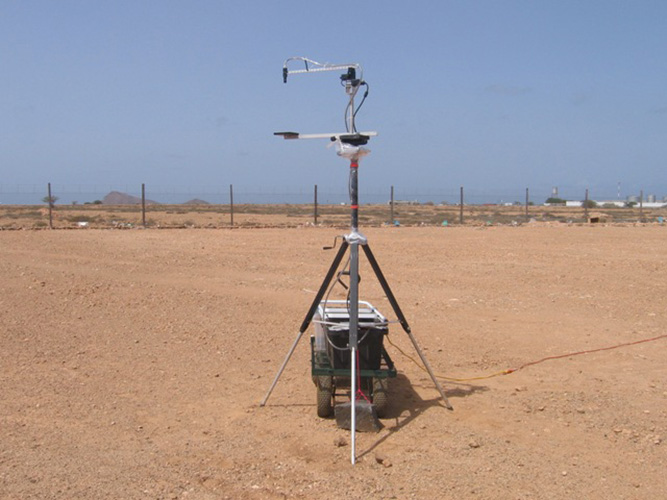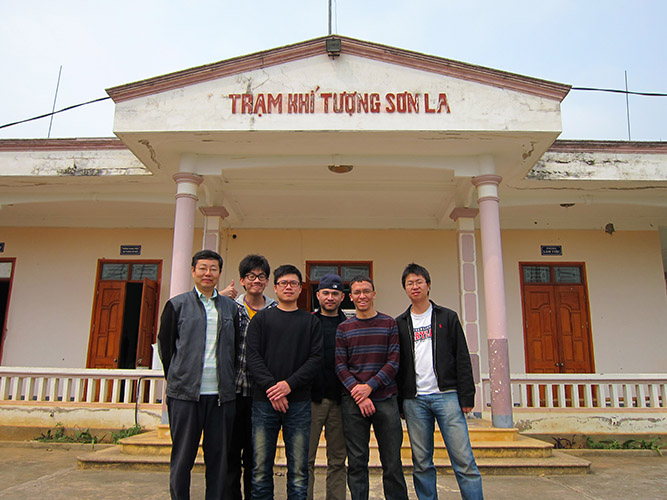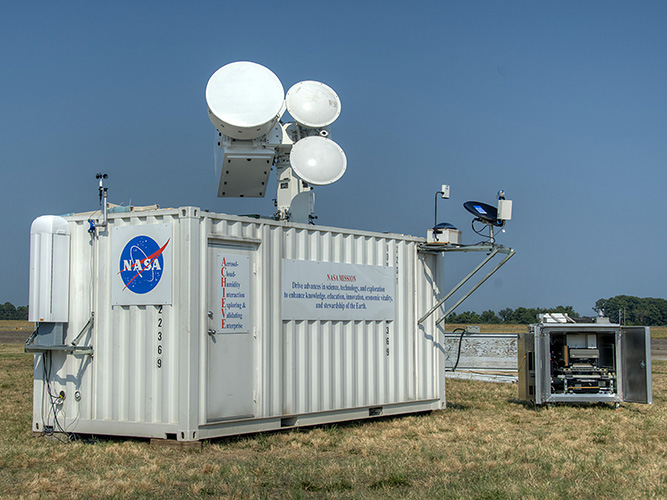SMART-COMMIT-ACHIEVE, Enriching EOS and Decadal Survey missions, piloting innovative investigations, conducting educational and public outreach activities
NASA SMARTLabs host a broad range of instruments, exceeding fifty active/passive sensors for the remote sensing of atmospheric solar and terrestrial radiation (SMART@2002) and for in-situ observations of physico-chemical properties (COMMIT@2006) of aerosols and precursor gases. ACHIEVE, which was constructed in 2011 to complement SMART-COMMIT, was deployed in Spring 2013. It includes an array of microwave radars to help better understand the interactions of aerosols and clouds. Collectively, SMART-COMMIT-ACHIEVE and additional campaign-specific instruments comprise SMARTLabs.
![]()
![]()
The SMARTLabs facility is designed to pursue the following goals:
Enriching EOS and Decadal Survey missions
- By collocating ground-based and space-borne observations, we are able to reach a more thorough understanding regarding the composition and physical processes of the atmosphere. Exploiting the complementary strengths of multiple sensors viewing the same atmosphere facilitates the direct validation and intercomparison between measured/retrieved properties of atmospheric constituents such as clouds and aerosols.
Piloting innovative investigations
- Equipped with a wide range of specialized instruments, SMARTLabs provides for the development of new methodologies to further explore the Earth-atmosphere system. In conjunction with satellite overpasses, strategically deploying SMARTLabs and distributed networks (i.e., AERONET/MPLNET) near/downwind of aerosol sources and along transport pathways will optimize, for example, the investigation of complex aerosol-cloud interactions, and the spatiotemporal evolution of aerosols and precursor gases.
Conducting educational and public outreach activities
- Through its rich deployment history, comprehensive instrumentation, and extensive scientific research, SMARTLabs offers excellent opportunities for educational (i.e., K-12, undergraduate and graduate) and public outreach activities (e.g., yearly events of Earth Day, Maryland Day and Goddard Day), and for close collaborations with research institutes/universities and environmental monitoring/protection agencies.
Since its inception in 2000, the SMARTLabs facility has collaborated with many domestic and international partners in over a dozen major field campaigns, spanning a wide range of climatological regimes in nine countries on three continents. The measurements made during these campaigns by the facility have led to more than 90 publications and numerous conference proceedings/presentations.



